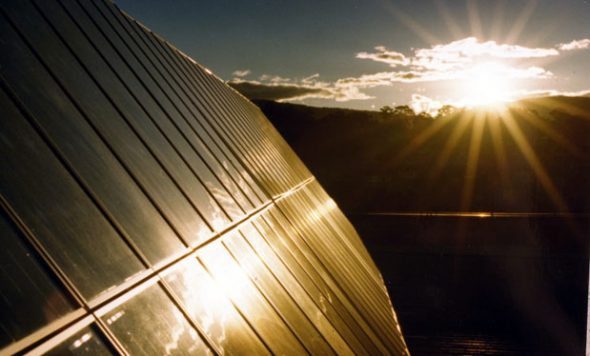
New South Wales grid operator Endeavour Energy is tendering for a large scale battery storage array to reduce network costs for a new housing development west of Illawarra.
In what will be the first battery storage program for Endeavour, the 1MWh battery system is set to be installed at the proposed West Dapto Zone Substation, with the state-owned grid company believing it could reduce network capital costs by $1 million a year.
By providing grid services such as frequency regulation and by buffering electricity supply during peak demand periods, large scale battery storage is fast emerging as an economic solution for grid operators.
In new housing developments or urban infill projects that result in higher density living, large scale batteries can reduce the need for grid infrastructure including grid capacity and expanded substations.
In the West Dapto region, which is planned to undergo major growth as a population center, Endeavour Energy is looking to deploy a large scale battery array for precisely this purpose.
The grid operator has opened a tender to: “supply, install and maintain [a] grid scale battery energy storage system” at West Dapto. The proposed West Dapto Zone Substation will supply electricity to 21,560 homes and 5,440 “multi dwellings.”
Endeavour Energy says that the battery storage unit could “reduce network capital investments… by deferring network augmentation through the provision of energy during periods of peak demand.”
“It also provides opportunities to better manage load, improve load factor and support the introduction of electric vehicles and micro-grids.”
An Endeavour spokesperson told RenewEconomy that the pilot program would assess battery storage’s ability to manage load and increase reliability on its networks.
If successful, Endeavour is looking to deploy batteries “to defer construction of up to four zone substations to 2024.”
The storage provider successful under the tender will be expected to supply a turnkey solution, with Endeavour only carrying our basic site preparation and providing grid connection.
Both distributed and utility scale storage tenders are being deployed at various sites around Australia. The Alkimos Beach project, in Western Australia, will deploy a similarly-sized system to a new housing development in Perth’s northern suburbs. The system will be supplied by Energy Made Clean with the project receiving support from the Australian Renewable Energy Agency (ARENA).
https://reneweconomy.wpengine.com/emc-to-supply-battery-system-for-large-scale-community-energy-storage-trial-48625/
SA Power Networks is looking towards distributed solar and storage to buffer the grid in Salisbury. The trial project is looking to install 3kW rooftop solar arrays coupled with 6.4kWh battery storage systems across 10 homes to meet growing local electricity demand.
The Endeavour Energy tender will close on February 17.










